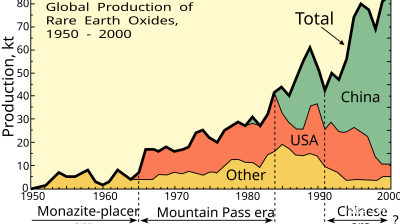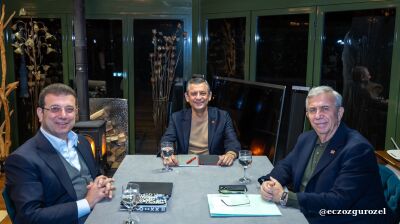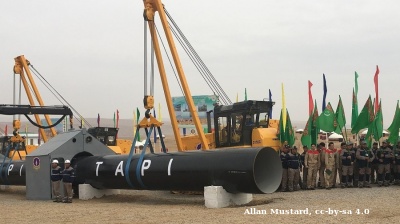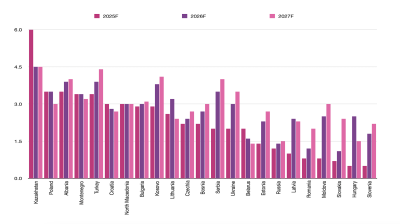The small town of Nukus in the wastes of Uzbekistan’s Qizilqum (aka Kzyl-Kum) desert is the “Louvre of the Steppe.” The new building, put up in 2017, houses an Aladdin’s cave of lost Russian impressionist art, an entire generation's worth that was rescued by art enthusiast Igor Savitsky. It is probably the second-biggest collection of avant-garde art in the world collected in the 30s after Stalin had most of an entire generation of impressionist artists repressed or executed.
Savitsky was born in the Ukraine in 1915 to a well-to-do family but eventually ended up running an archaeological project in Nukus. Stalin didn't like the new impressionist style that was being developed in France and leaked into Russia where a whole school of painters embraced it, turning out their own interpretations. In 1932 the Kremlin officially ruled that only the social realism style was acceptable and most of the Russian artists simply stopped displaying their work, while many were arrested for anti-Soviet propaganda.
Savitsky began travelling to Moscow and St Petersburg and bought up entire collections, or was sometimes gifted them by relatives hoping to save the paintings from destruction. In all Savitsky assembled a collection of over 80,000 canvases, many of them masterpieces, and opened the Savitsky Museum in a few rooms of Nukus’ natural history museum in 1966, where they hung as many of the best pieces from ceiling to floor. At the same time, Savitsky collected the work of local artists and is credited with being the father of a whole school of Central Asian painting, which is also on display in the Nukus museum.
Old building
The Uzbek authorities took a long time to realise the treasure trove that was sitting in a run-down old building in the remote western town that is the capital of the Karakalpakstan region.

The curator of Savitsky’s Museum, Marinika Babanazarova
At the time Nukus was an ecological disaster and the local economy had completely collapsed. The region's firms had no money and were paying workers with sacks of pasta so they at least had something to eat. Decades of over-irrigation of the surrounding cotton fields meant the water table had risen to the surface and the foundations of all the buildings in the small city were rotting in the stagnant water. Babanazarova was doing what she could to preserve the paintings and protect them from damage. But in the last five years the museum has become increasingly famous and more and more travellers are going out of their way to visit the collection.
Just before he died in 1984 he told Babanazarova: “I created the museum too soon. But one day people from Paris will come to Nukus.”
Babanazarova said: “Savitsky always said people would come from Paris to see it, and now the French are our number one visitors.” In 2008 President Chirac was one of those admirers of part of the collection at a rare foreign show in Paris.
Savitsky’s career
Growing up in Ukraine in the twilight days of the Russian empire, Savitsky’s grandfather was a well-known member of the Russian Academy of Sciences. As a child, Savitsky received an excellent education, travelled abroad and spoke fluent French. Having decided to become an artist, Savitsky entered the Surikov Institute in Moscow but couldn’t find work after graduating.
When World War II erupted, Savitsky was evacuated to Uzbekistan (he was unfit to serve due to an illness). During this period he befriended prominent Russian artists Robert Falk and Konstantin Istomin, who had also been evacuated to the region.
Savitsky trained and worked as an archaeologist in Central Asia, but was also a painter and passionate art lover. He began to collect the art of locals and encouraged them by giving lessons to young artists, including some of the more prominent Uzbek artists of the period.
When a chance to work as an artist at the Khorezm Archaeological and Ethnographic Expedition in the Kyzl-Kum desert came up, he took it. The expedition made significant discoveries in local history, while Savitsky developed a deep attachment for the Karakalpakstan region, which featured heavily in his own art.
Savitsky started collecting ethnographic objects from local villages: carpets, costumes, folk art. Soon local authorities noticed his efforts and made him the head of the museum in Nukus in 1966.
After the museum was established Savitsky paid more attention to the paintings being produced by local artists, many of which are on exhibition in Nukus today. This led to Savitsky’s discovery of Alexander Volkov, Ural Tansykbaev, Viktor Ufimtsev and others, whose style is now dubbed “Turkestan avant-garde” and amongst the most famous of the local artists.
Tansykbaev – the most famous of all – was initially attracted to Fauvism and Expressionism, but later turned to Socialist Realism as the political climate changed, and he became a member of the Soviet Academy of Arts.
The Nukus art museum was the first dedicated to Central Asian art where he displayed his collection in a few rooms in the old history museum in Nukus, the same building that Babanazarova occupied when I met her.

Art collector Igor Savitsky
Russian impressionism
The artistic movement which emerged in Russia around 1890 unfolded through the extensive flow of art and artists between Paris and Moscow, which were culturally joined at the hip in Tsarist Russia. However, following the October Revolution in 1917 the ties with France were broken and art became the preserve of the state.
Stalin cracked down on the new school and constrained art to populist, realist and easily understandable iterations via Socialist Realism. Art took on a propaganda role that impinged on its style and narrowed the interpretations an artist could make. The State fought an escalating campaign to completely eradicate the genre of true art until Stalin’s death in 1953. Savitsky played a major role in preserving that entire generation of Soviet art.
Russia was rocked by Stalin’s terror in the early 30s. In 1932 the Soviet government decreed that artists had to follow the social realism school, but this was the heyday of impressionism and a Russian school had embraced the new ideas.
The painters soon got into trouble. Some were arrested. Others didn't show their work for fear of retribution. And many simply ran out of money.
Savitsky started to travel up to Moscow and St Petersburg to rescue the works of these artists and take them back to the relative safety of his museum in Nukus. Under the noses of the Soviet censors Savitsky amassed a collection that encompassed the works of almost an entire generation of artists.
He disguised thousands of priceless paintings as simple luggage and packed them off to Uzbekistan. He loaded them onto trains and trucks assigned to a non-existent archaeological expedition, which whisked them off to safety in the far flung desert town that was his home.
Savitsky bought a lot of the art using the museum’s money but most of it came from his own pocket, or he simply wrote IOUs to the artist’s family. When he was in Moscow close to the end of his life he would joke: “I can’t die yet as I owe too much money!”
Among the Russia impressionist works on display today in Nukus are some from the group of Russian artists painting in the impressionist style called the “Jack of Diamonds” group in the 20s centred around Sergei Nikritin, who had lived in Paris and was friends with Picasso.
There are also works on the wall in Nukus by Lyubov Popova, probably the best-known female artist of the Russian avant-garde, as well as more obscure painters such as Alisa Poret and Boris Rybchenkov.
In one of the most brazen collection stories, after discovering a series of sketches by Nadezhda Borovaya, an artist who smuggled depictions of her daily life out of the Temnikov Gulag, Savitsky persuaded party officials that her art actually illustrated Nazi, not Russian, concentration camps and persuaded the local Party chief to give him money to purchase her surviving work, which is now also in the Nukus collection.
Predictably the Jack of Diamonds group fell foul of the authorities, but Savitsky managed to scoop up much of their work, including that of Nikritin, before it could be confiscated and destroyed.
Old and new building
The old building remained largely untouched since Savitsky set the museum up. When I visited first in 1999 most of the paintings were housed on racks inside concrete blocks that Savitsky had built himself at the back of the museum proper. But conditions were not good.
“We can’t afford anything. Despite having these treasures we are in a critical position. We are financed by the local budget, but they give us nothing other than salaries,” Babanazarova told me, who is the daughter of the co-founder of the museum, Marat Nurmukhamedov.
However, as the secret of the treasure in Nukus began to leak out Babanazarova start to get offers of money and help. Experts from Russia’s legendary Hermitage museum in St Petersburg flew down to see her and tried to recover the collection, but she resisted.
The Nukus Museum became better known after several exhibits were organised abroad in the 1990s. Then in 2011 an American-made documentary, “The Desert of Forbidden Art”, about Savitsky was shown and promoted a group of 85 American artists to charter a plane to fly to Nukus specifically to visit the museum, where they offered Babanazarova large sums of money to buys a few pieces. She refused that offer too, afraid that if she sold even one painting it would suddenly become clear to the authorities in Tashkent how incredibly valuable the entire collection was and trigger a massive auction of the collection by the cash-strapped Karimov regime.
Nevertheless, following the success of the international exhibits the authorities were slowly waking up to the value of the collection and the need to preserve it. In 2003 a new building was put up and then expanded into the modern three-story complex that is there today.
In November 2010, while Babanazarova was out of town on business, officials suddenly declared the original museum building condemned. Granted just forty-eight hours to evacuate its contents, employees haphazardly piled fragile canvases on the new building’s exposed basement floor in a rush to transfer them to a new building.
Babanazarova had by this time become a more influential woman and thanks to a degree in English had built up contacts with the international art community and was actively promoting dissident art. Uzbekistan was still under the control of the authoritarian president Islam Karimov and the authorities became increasingly suspicious of Babanazarova’s relationship with foreigners as well as threatened by her growing international stature.
During the summer of 2015, they struck. A scandal erupted where the authorities accused Babanazarova of pilfering from the museum and selling art on the black market. She was fired her from her position. Her supporters claim that Uzbek authorities fabricated the story in order to take control of the collection into the hands of the state.
Collection
Today the museum displays a mixture of the famous Central Asian artists but only a fraction of the Russian impressionist collection. Despite the large new building, the wall space is too limited and the role of the museum is more about celebrating the domestic artistic achievement than those of the lost generation of Russian impressionist painters.
Karimov took a selection of the paintings with him to Paris during his state trip and current Uzbek President Shavkat Mirziyoyev did the same in April 2017 shortly after his appointment on his first state visit to Russia. The decision to bring the famous collection was a soft power move by the newly installed president designed to show the deep cultural ties and long-standing friendship between the two countries, and it went down very well.
The paintings were shown at the renowned Pushkin Museum in Moscow: 200 canvases of the collection’s most iconic items. The Pushkin was the perfect venue, as it boasts Moscow’s largest collection of European art. Ironically, its most distinguished pieces are works of impressionist and post-impressionist painters, including Van Gogh, Picasso, Derain and Matisse – the same artists that inspired the Russian impressionists that were castigated by Stalin. The exhibition was a huge success with round-the-block queues that prompted the administrators to extend it by three weeks as Russians lapped up their missing avant-garde artistic legacy for the first time.
The centrepiece of the Nukus collection is “The Bull” by the Belarusian artist Vladimir Lysenko, originally called “Fascists Advances,” and is the picture most intimately associated with the museum.
The Soviet censors deemed it anti-Soviet and Lisenko was interned in a metal asylum for 15 years from which he eventually emerged paralyzed and extremely ill.
Lysenko was born in Bryansk, now in Russia on the Ukrainian border, to Belarusian parents and studied under the famous artist Kazmir Malevich at the Institute of Artistic Culture in Russia, one of two art academies established by Lenin.
As the movement’s most influential patron, Lenin’s institutes offered artists such as Malevich and the international renowned abstract artist Vasili Kandinsky, who also studied at the institute, space to debate freely the ideologies that shaped avant-garde. The abstract images they produced, which involved precise geometry and which emphasised proportion and space, challenged commonplace notions of art and reality in the golden period of Russian impressionism. During this time, both the movement and art revolution were seen as in step with the new revolutionary society, but after Lenin’s stroke in 1922 the tolerant attitude to experimental art evaporated.
Unlike Lenin, Stalin considered the avant-garde bourgeois, instead preferring the more straight-forward and more easily understood realism. Stalin’s preferences were eventually institutionalised in what became known as socialist realism, characterised by the glorified, realistic portrayal of communist values by larger-than-life heroic figures. By 1930, about the time Lysenko returned to Tashkent, Stalin dissolved both of Lenin’s institutes and forced the movement underground. Two years later, the Party took control of artists’ unions and officially imposed socialist realism one year after that. Stalin insisted that art should portray the easily understood iterations of the New Soviet Man and the accomplishments of the first and second Five-Year Plans.
During Stalin’s reign, “formalism” came to be used as the catch-all term to denigrate any form of art that deviated from the Soviet norm and was often used in political struggles between artists to denounce rivals.
Lysenko painted The Bull but hid it for years, fearing it would not conform to the officially approved form of art.
And the painting is very political. Lysenko dropped the original name “Fascist approaching” as he considered it to be too provocative, but the symbolism is obvious to even an untrained eye. The flags on the horn of the bull are of those countries that supported the Nazis in WWII and the hollow back eyes of the bull are clearly the barrels of a cannon.
When the painting was put on display, the censors saw it as a parody of the mighty USSR advancing as a raging bull; its eyes symbolic of Stalin’s methods of repression and blindness of state; and the rising sun symbolic of the Soviet Union.
Few details of Lysenko life are known. He first visited Uzbekistan’s capital, Tashkent, in either 1918 or 1919. Between 1925-9, he studied at the Lenin institute under Malevich, when it is believed that Lysenko painted The Bull. He exhibited several times in various Russian cities but in 1935 he was declared a formalist and sent to a mental institute for seven years. He spent the next decade in and out of institutes until he was finally rehabilitated in 1950, but by that time he was seriously ill and paralysed, living with his sister.
Savitsky visited the artist at his home and bought the painting from his sister, although by that point Lysenko could no longer talk. He eventually died sometime in the late 1950s after Stalin’s death.
Back in Nukus Savitsky put The Bull on display in his museum, but in a typically brazen episode the museum was subjected a surprise inspection by Soviet art inspectors, who immediately focused on the painting. The inspectors quickly assessed The Bull as “anti-Soviet” and Savitsky immediately agreed and removed it from display... until the inspectors left. Then he immediately returned it to its place in the exhibition. Nukus is a very long way from Tashkent and the inspectors come to check the exhibition very rarely.
Over the last two decades Nukus has recovered. The salt that used to cake the soil has gone and local agriculture has been re-engineered to produce crops that are less damaging to the soil. Several factories have been opened that provide the local population with work and the roads and infrastructure have been repaired. The new building dominates the dusty main square and its clean and cool interior offers respite from the heat outside. There are few other reasons to visit Nukus but there is a steady trickle of tourists, both local and international, that have made the trek to see what remains one of the finest exhibitions of avant-garde art in the world.



Features

Asian economies weigh their options amid fears of over-reliance on Chinese rare-earths
Just how control over these critical minerals plays out will be a long fought battle lasting decades, and one that will increasingly define Asia’s industrial future.

BEYOND THE BOSPORUS: Espionage claims thrown at Imamoglu mean relief at dismissal of CHP court case is short-lived
Wife of Erdogan opponent mocks regime, saying it is also alleged that her husband “set Rome on fire”. Demands investigation.

Turkmenistan’s TAPI gas pipeline takes off
Turkmenistan's 1,800km TAPI gas pipeline breaks ground after 30 years with first 14km completed into Afghanistan, aiming to deliver 33bcm annually to Pakistan and India by 2027 despite geopolitical hurdles.

Looking back: Prabowo’s first year of populism, growth, and the pursuit of sovereignty
His administration, which began with a promise of pragmatic reform and continuity, has in recent months leaned heavily on populist and interventionist economic policies.




